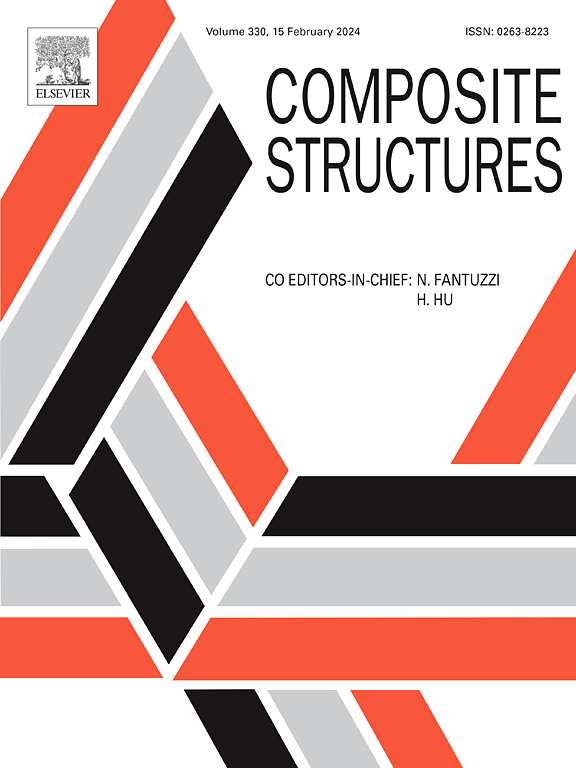Hybrid neural network for the prediction of damage patterns in open-hole composites
IF 6.3
2区 材料科学
Q1 MATERIALS SCIENCE, COMPOSITES
引用次数: 0
Abstract
Damage pattern predictions of open-hole laminates under different loading conditions are ubiquitous in the finite element modelling of composite structures. This work investigated the applicability of artificial neural networks for the fast and accurate generation of damage patterns for a composite plate with a cut-out under a variety of loading conditions. The purpose is to explore the neural networks as surrogate models capable of returning damage pattern predictions on par with a finite element model, but requiring less computational effort at run time. Data for training and evaluating these neural networks was generated through nonlinear finite element models. Different neural networks, such as a standard Feedforward Neural Network and a Hybrid Neural Network that combines a Feedforward Neural Network with a convolutional decoder, have been tested for this task. To quantify the resemblance between the predicted and actual outputs in terms of colours and contours, different performance metrics have been explored. The use of the Structural Similarity Index (SSIM), in addition to the standard Mean Square Error (MSE), was explored to improve the visual quality of outputs from the neural network. With an average test MSE of 0.0014, SSIM of 0.9814, and computational speedup factor of 34, the Hybrid Neural Network has been shown to accurately and efficiently predict the damage patterns of the open-hole laminate, thereby constituting a promising candidate for a surrogate model of open-hole composite panels.
基于混合神经网络的裸眼复合材料损伤模式预测
在复合材料结构的有限元建模中,开孔层合板在不同载荷条件下的损伤模式预测是非常普遍的。本文研究了人工神经网络在多种载荷条件下快速准确生成带切口复合材料板损伤模式的适用性。目的是探索神经网络作为替代模型,能够返回与有限元模型相当的损伤模式预测,但在运行时需要更少的计算量。训练和评估这些神经网络的数据是通过非线性有限元模型生成的。不同的神经网络,如标准前馈神经网络和将前馈神经网络与卷积解码器相结合的混合神经网络,已经被测试用于这项任务。为了量化在颜色和轮廓方面预测和实际输出之间的相似性,已经探索了不同的性能指标。除了标准均方误差(MSE)外,还探讨了结构相似指数(SSIM)的使用,以提高神经网络输出的视觉质量。混合神经网络的平均测试MSE为0.0014,SSIM为0.9814,计算加速因子为34,可以准确有效地预测开孔复合材料板的损伤模式,为开孔复合材料板的替代模型提供了一个很好的候选模型。
本文章由计算机程序翻译,如有差异,请以英文原文为准。
求助全文
约1分钟内获得全文
求助全文
来源期刊

Composite Structures
工程技术-材料科学:复合
CiteScore
12.00
自引率
12.70%
发文量
1246
审稿时长
78 days
期刊介绍:
The past few decades have seen outstanding advances in the use of composite materials in structural applications. There can be little doubt that, within engineering circles, composites have revolutionised traditional design concepts and made possible an unparalleled range of new and exciting possibilities as viable materials for construction. Composite Structures, an International Journal, disseminates knowledge between users, manufacturers, designers and researchers involved in structures or structural components manufactured using composite materials.
The journal publishes papers which contribute to knowledge in the use of composite materials in engineering structures. Papers deal with design, research and development studies, experimental investigations, theoretical analysis and fabrication techniques relevant to the application of composites in load-bearing components for assemblies, ranging from individual components such as plates and shells to complete composite structures.
 求助内容:
求助内容: 应助结果提醒方式:
应助结果提醒方式:


